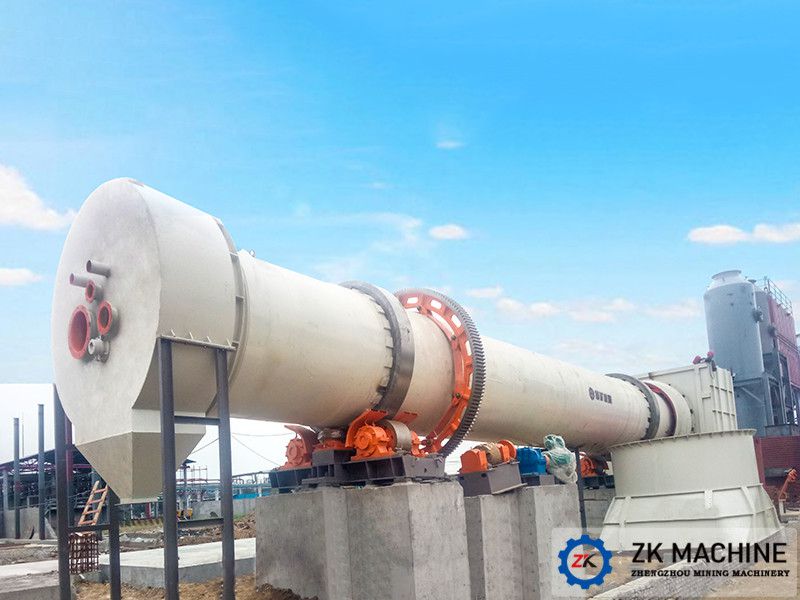- +8618937185591
- +8618937185591
- ec19@zkcorp.com
- +8618937185591


Introduction
Hazardous waste treatment is an important environmental protection measure for industrial construction, which can not only provide a good production environment for social construction, but also promote the whole process of ecological industrial construction. With the improvement of technical capability, the treatment of hazardous wastes has been better carried out, and the basic treatment requirements of hazardous wastes can be met by using advanced facilities. However, there are still some hidden dangers during the treatment of hazardous wastes, which not only affect the efficiency of the whole treatment, but also exist many unsafe factors. The emergence of rotary kiln incinerator has changed the current situation of hazardous waste treatment, which not only improves the overall working efficiency of hazardous waste treatment, but also makes the difficulty of treatment better controlled and better ensures the personal safety of operators.
The definition and classification of rotary kiln incinerator, rotary kiln incinerator is to add the incineration form of lining furnace inside the furnace body, the material of the furnace body is mainly steel, the whole furnace body is cylindrical, the fire resistance of the lining furnace inside is more prominent. It works mainly in three ways: one is the form of non-melting furnace and melting furnace. The temperature of the non-melting furnace can reach about ℃ in the process of burning, while the latter can reach about ℃ in the process of burning, and at the same time, it can burn high molecular compounds and organic matters together. The second is to divide according to the movement direction of gas and solid state in the furnace, namely, downstream furnace and Countercurrent furnace. During the operation of downstream furnace, the movement direction of gas is the same as that of waste, while the countercurrent furnace is just in the opposite direction of downstream furnace. Through the change of the temperature difference of waste, water can be evaporated in a short time; The third is to divide according to the fire resistance of materials, it is divided into incinerators with and without refractory materials.
Three, the composition of the rotary kiln incinerator system and the key points needing attention during application
The rotary kiln incinerator is mainly beneficial to its rotary function. It works on the waste under the action of high-speed agitation. It can carry out corresponding combustion operation according to the waste treatment situation. By utilizing the excellent heat insulation ability of the lining furnace, it can stay at a standstill for a long time until the ideal expected treatment effect is achieved.
, rotary kiln incinerator system composition
The rotary kiln incineration system mainly consists of rotary kiln, combustion-supporting and flue gas purification system, secondary combustion chamber, air supply, waste heat boiler, slag removal facilities, etc. The rotary kiln is made of steel plates with relatively excellent fire resistance. The kiln body is cylindrical, and the whole cylinder body inclines according to a certain angle, forming the whole supporting system with the horizontal line. Using its rotary function, different kinds of wastes can be evenly mixed and gradually precipitated until they are finally burnt out. The best working temperature of the rotary kiln is between 845-905 degrees. The burner can be used to control its temperature, and the fuel can be divided into gaseous state and liquid state according to its state.
2. Key points to be paid attention to during the application of rotary kiln incinerator
During the actual design of the rotary kiln, the coordination of its size, inclination angle, rotation speed and many other links should be ensured. At the same time, the setting of stagnation time should also be ensured within a reasonable range. The inclination angle is about 1.5 °, and the stagnation time is controlled between 0.5 H-2. The function of the secondary combustion chamber is to achieve efficient combustion operation and to realize the function of smoke and dust separation. The second combustion chamber will further process the burning flue gas, and a large amount of CO2/CO/dust gas will be generated during the combustion process. The infrared sensor measures the temperature by measuring the infrared wavelength of the hot CO2/CO/dust gas. Due to the thin film thermopile with specially designed infrared color filter, the sensor has been adjusted in advance, and its infrared spectrum response defaults to the specific detection CO2/CO/dust spectrum. Therefore, when designing the secondary combustion chamber, the operating temperature should be controlled around 1100℃, and the retention time of flue gas should be more than 2s. Only by achieving this working efficiency can we ensure that the harmful components in hazardous waste get better treatment effect. In addition, chimneys should be set up at appropriate positions, which are mainly to ensure that in the case of equipment failure, it is still possible to operate through emergency treatment facilities.